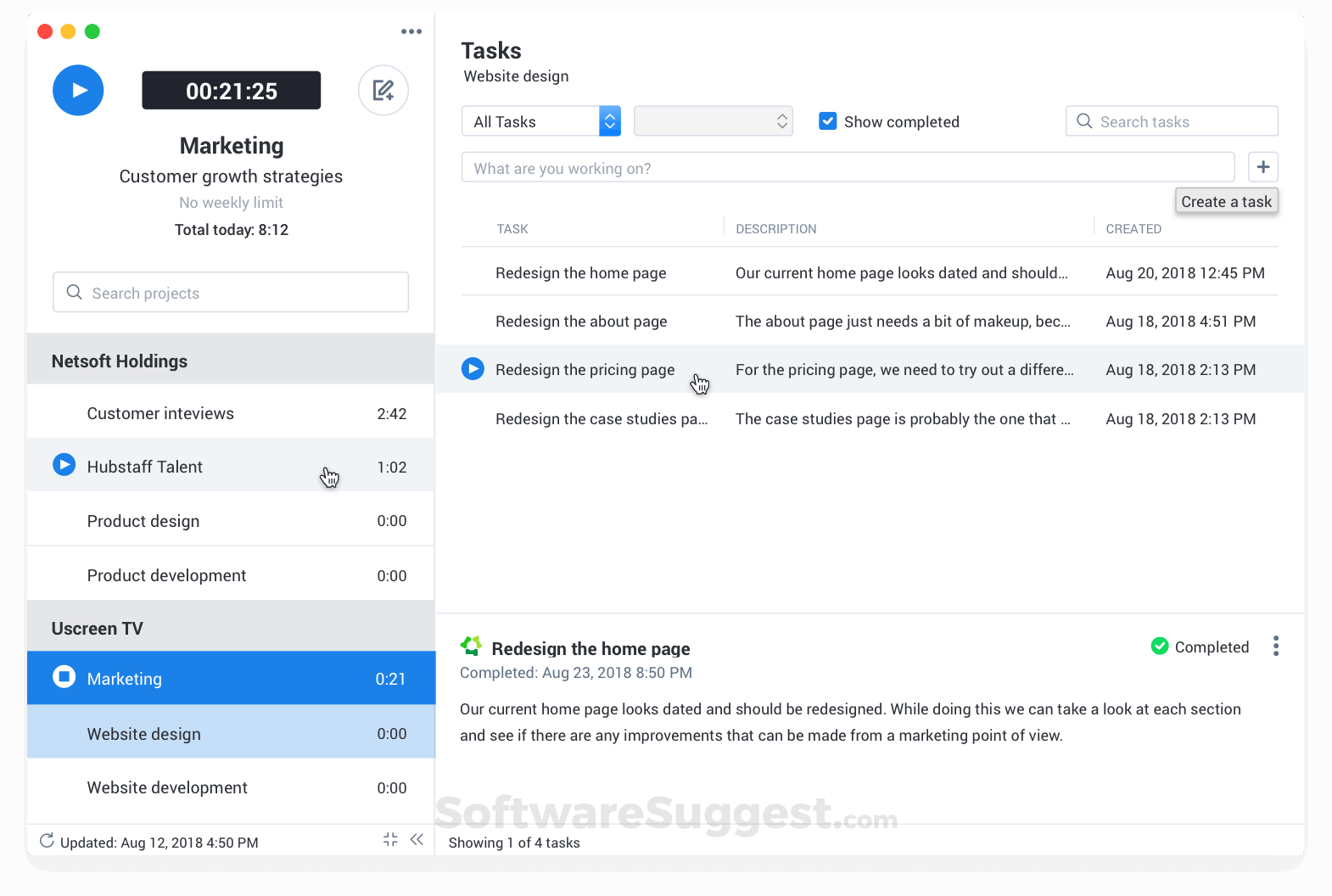
- #Hubstaff vs desktime for mac
- #Hubstaff vs desktime manual
- #Hubstaff vs desktime software
- #Hubstaff vs desktime Offline
You can track billable and non-billable hours, vacation/leave etc. Users will find help in doing timesheet management and overtime calculation.


#Hubstaff vs desktime Offline
Time tracking from mobile devices is possible but offline time tracking is impossible.
#Hubstaff vs desktime software
This software contains a few deep learning features like ML algorithm library, neural network modeling, model training etc. Agencies, small teams, and freelancers will find the tool highly useful and intuitive.show moreĭeskTime web-based time tracking software can also be used as an artificial intelligence software, project management software etc.
#Hubstaff vs desktime manual
Toggl Track can eliminate unprofitable projects, uneven work distribution, and grueling manual admin.

Toggl features one-click time tracking, flexible and robust reporting capabilities, tiered user access levels, multiple billing rates, and offline mode.
#Hubstaff vs desktime for mac
This app has multi-platform support with a web app, desktop apps for Mac and Windows, mobile apps for Android and iOS, and a browser extension for Chrome and Firefox that integrates with hundreds of popular project management and productivity tools. In terms of the number of integrations offered, Hubstaff has the advantage But if you’re looking for a superior and smoother calendar integration with your already set-up schedule, go with DeskTime.Toggl Track is a cloud-based time tracking solution for solo entrepreneurs and teams. You can manually add time spent away as well, but DeskTime lets you save time by simply integrating with your already set-up Google Calendar. Hubstaff offers a similar function too – they allow you to do this in their own “Schedules” calendar. This helps you save time in the long run since you don't have to manually put in offline hours anymore. By syncing your preferred time-planning tool with DeskTime, your time away will be automatically counted towards your productive time at work (e.g., time spent at meetings, training, etc.). Google Calendar is among the many integrations of DeskTime, and it lets users log offline time (time away from computers). Compared to Hubstaff, DeskTime offers a more advanced and detailed look into your team and can help you manage them better as a result.ĭo you use other time-planning tools like Google Calendar or Outlook Calendar? At the end of the day, if you just want to help yourself or your team meet deadlines, you can do that easily with DeskTime. So, if you want to create a detailed layout of specific departments and employee groups, be sure to go with DeskTime.īut if you want to save time on set-up and you're simply looking for a general overview of how your team is doing, Hubstaff can probably help you with that more. In short: DeskTime lets you see the bigger picture without micromanaging your employees. You can manage project costs and bill your clients accordingly, log offline hours (and charge them too), automate and generate custom reports, which can be exported, and more. Depending on your needs, DeskTime can provide a simple dashboard overview or a more detailed look into how your team is doing. It’s mainly for companies and teams that are interested in the bigger picture, but it can also provide an in-depth dive into the productivity management of your department. DeskTime makes sure to zoom in on the details. Although you can set it up to focus on your own goals and projects, it truly shines when it’s used for and by a group of outsourced employees.įor advanced project management, employee monitoring, productivity analysis, and more, choose DeskTime. Hubstaff, on the other hand, is more focused on assigning employees to certain projects and then tracking their time accordingly. But if you’d rather get into the details of your work habits, calculate your effectiveness and productivity percentages, and then export that in a ready Excel file, DeskTime can help you with that too. If you want to simply find out your list of productive and unproductive apps and how long you spend on each site daily, you can easily do that with DeskTime. And the best part is, it can be only as complicated as you make it. With DeskTime, you can track a lot of things: URLs, documents and their titles (programs you have running), time on an hour-to-hour basis, productivity levels, and more. If you’re a one-man-band type of person with a strong sense of self-discipline and want to make sure you don’t get distracted – go with DeskTime.


 0 kommentar(er)
0 kommentar(er)
